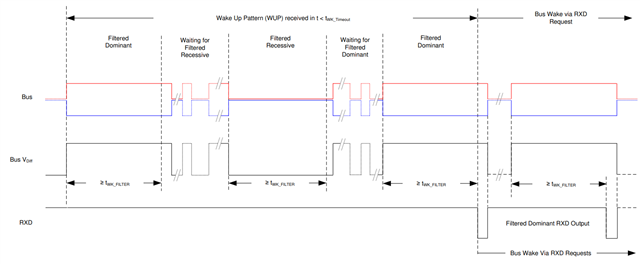Hello team,
It looks the RXD after the valid WUP reflects the CAN bus status. Meaning RXD becomes low when CAN bus is dominant (there is filter time tWK_FILTER though)
Why does this RXD reflects the CAN bus status instead of keeping RXD Low?

Regards,
Hirata

